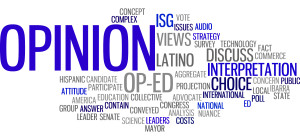I have never been successful at writing op-eds, basically I have given up in order to write shorter academic pieces for visible places. The preference for an academic generally should be places like Foreign Affairs, Foreign Policy, and Slate that will take 1000-2000 word pieces arguing a point, but with evidence, quasi citations (links), and references to your own works. The reality is that think tanks still matter, policy makers read them, Obama is briefed on them.
While attending Bridging the Gap this week hosted American University we got some advice from op-ed curators and editors on the structure of the process. I won’t really give any advice on the pitch or targeting certain outlets, but will pass on some advice on the structure of op-eds that I have never heard before. I am not even sure this is right, but it might be helpful to pass on.
- Start with the conclusion, op-eds have the argument flipped
- Paragraph two is the “nutgraph”, provide context and setting
- Next few paragraphs are the arguments, generally in a rule of three
- Paragraph six mentions the opposition, but returns at end to your point
- Didn’t really get any advice on the last paragraph but I assume it’s the tag. I tend to think in terms of comedians tagging a joke, tag your article with something memorable and walk off the stage.
- Stick to 800 words, often it can be only 650.
Once again, I have never succeeded at op-eds having given up lately, so take this with a grain of salt, but it might be helpful to others. Prepare for constant rejection, realize that major papers only have slots for one outside op-ed per issue, with three devoted to domestic a week and three devoted to international issues the rest of the week. Think about new options, like the Washington Post’s forthcoming op-ed only blog or the Weekend editions that might have different editors.
Big thanks to Heidi Hardt for passing on her notes, take a look at her recent book on IOs and crisis responses.
